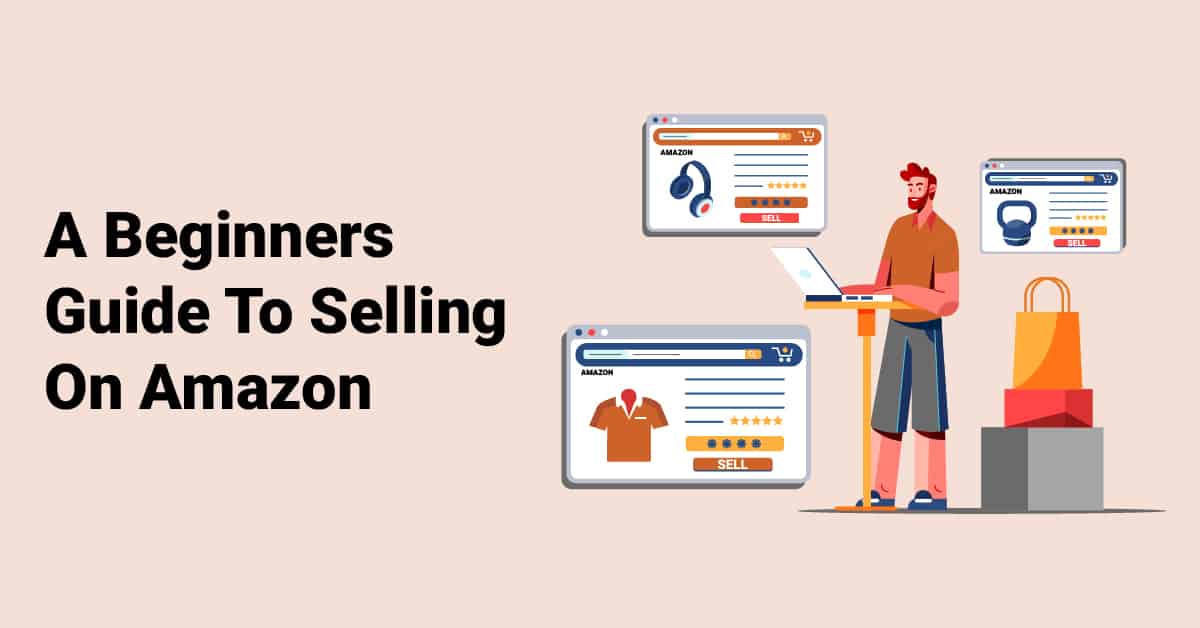
Amazon is an increasingly popular platform for selling and buying a variety of items. It is quickly becoming people’s go-to site when they want a specific item to be delivered quickly.
This is because they have a large selection of items with a choice of delivery services.
This ease of buying on Amazon gives it one of the largest consumer pools online. When you’re planning on selling online, having a large consumer pool is integral to your success as you don’t have to build a new audience from scratch.
Since Amazon is also a large site with lots of traffic, it is also a great place to build or expose your brand.
A downside of Amazon being such a successful selling platform is that there is a lot of competition. Almost every item is available for purchase there and in a variety of styles and materials.
Standing out in this saturated market is not easy, but it is possible.
In this guide, we outline exactly how you can get started with selling items on Amazon. We cover what you need, what options are available to you, and how to make your selling business successful.
Why Should You Choose Amazon Over Other Selling Platforms?

Amazon is one of the largest traffic websites on the internet, having amassed 2.4 billion visits in September 2022 alone.
Having a large number of potential customers makes selling on Amazon relatively easy when compared to other, lesser-known sites.
You also get the benefits of being an established seller on Amazon. They offer an Amazon partnership if you have a good product and profit margin that allows you to interact with other Amazon partners to further build your brand.
While you are selling through Amazon, you are usually still responsible for your customers, this can help to give you experience for when your brand gets bigger and also improve your products overall.
While there are a lot of positives to selling on Amazon, there are a few cons that will need to be considered.
The first is that Amazon has a lot of different fees for a variety of reasons, and if you don’t understand them all then you can unexpectedly be charged. We cover most of these fees later on in the article.
Another downside to selling on Amazon is that they have strict rules you need to follow about what items you can sell and how to sell them. Other sites may not have these strict rules and give you more freedom about what you are able to sell.
What You Will Need When Registering On Amazon
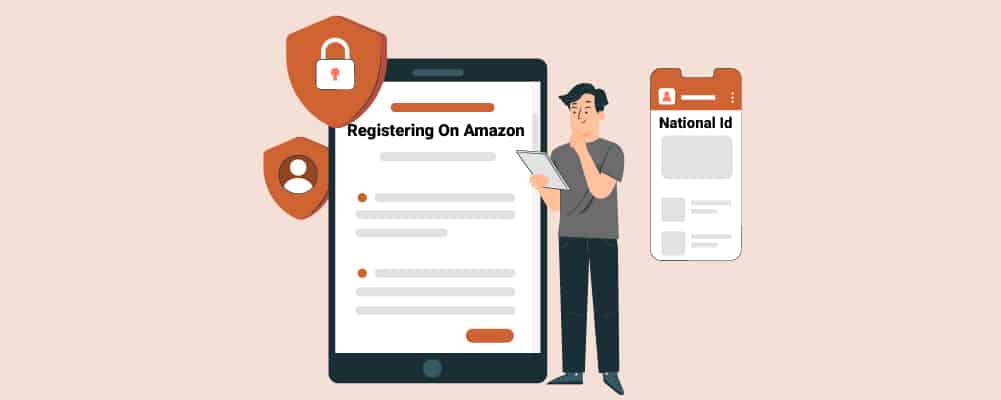
The first thing you need to do is set up an Amazon Seller account, this is where you will manage your items. An Amazon Seller account is very easy and you only need a few details to get started which we will go over later in this article.
Depending on where you live, you may also need to have a business license since you are essentially creating a small online selling business.
When setting up your business, it is important to keep it separate from your personal life. This includes having a separate email for it and possibly a separate phone if you can afford to.
When setting up your Amazon Seller account they will ask you what category you are planning on selling to, some categories require approval which can elongate the registration process.
Bank Account Number And Bank Routing Number
Since selling on Amazon is another way to make money, it makes sense that you must provide your bank information so that you can be billed and also have any money you make deposited into your account.
Chargeable Credit Card
Since Amazon has fees that need to be paid, having a chargeable credit card linked to your account means that Amazon will always be able to have those fees paid.
Government Issued National ID
You need to provide photocopies of your ID so that way Amazon can verify your credentials and establish that you can be a trusted seller.
Tax Information
You need to provide Amazon with the details of what your business is so that it can be appropriately taxed. The types of businesses you can own include an LLC, partnership, corporation, or sole proprietorship.
Tax information also includes your social security number.
Phone Number
This is needed so that Amazon, or maybe even customers, are able to contact you at any point.
This contact can be about different notifications or service updates.
Choose An Amazon Seller Plan
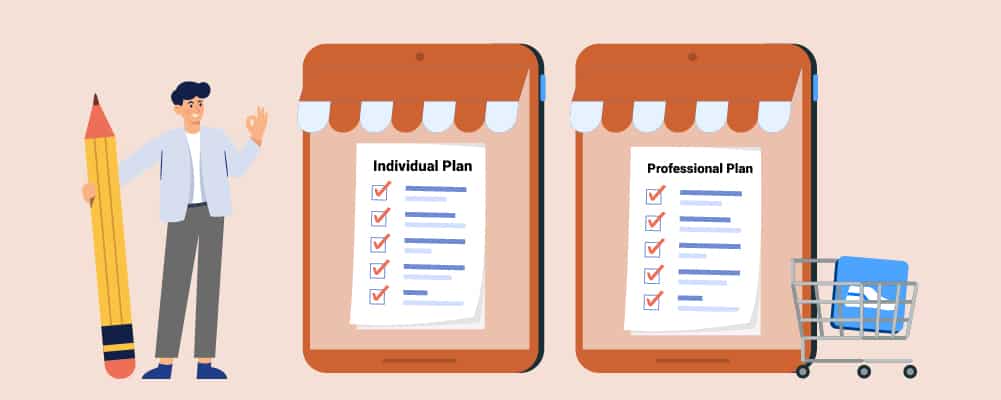
Once you have an Amazon Seller account set up, you need to choose what plan to use. There are 2 different plan options on Amazon, individual and professional, the one you select depends on your needs and you are able to change it at any time.
Before selecting a plan make sure you check their policies, code of conduct, and any requirements. This can greatly affect the plan you choose so you need to be well informed.
Individual
When starting out, this is a great plan to choose. It is free to select and you only pay when you sell an item. It is $0.99 per item sold so is great if you aren’t sure what to sell and are testing out different items.
An individual plan doesn’t give you access to advanced selling tools, the goal should be to sell enough products for it to be worthwhile getting the professional plan.
Professional
This makes it the ideal plan to use if you are selling more than 40 items per month since it will end up cheaper and you get access to different selling tools.
The professional plan is a subscription-based one where it costs $39.99 per month instead of paying per item.
In the long run, you will likely end up making more with the professional plan, so you want to get your business to a level where it is worthwhile purchasing it.
What You Will Need To Do Before Starting To Sell On Amazon
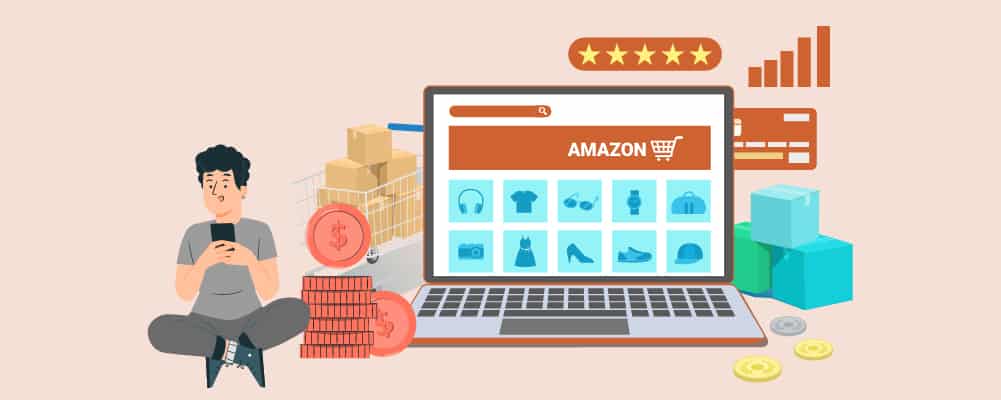
Now you know how to start selling on Amazon, it is time to start thinking about the product you are going to sell.
You ideally want a general idea of what you are going to sell before you set up your Amazon Seller account since some categories require approval.
Take this time to properly research, the more information you have, the better equipped you are to deal with anything unexpected.
You also need to think about what you want to get out of selling online, and what is your end goal. Are you planning on building up a brand by selling online or are you only looking for a means to make a bit of extra cash?
It is also good to use this opportunity to set realistic expectations for your selling business. Only 63% of sellers turn a profit within 1 year of selling on Amazon, and while it is a majority, you still need to prepare for the worst-case scenario.
It may take you a couple of years before you are seeing a profit from your hard work.
Find Your Product Niche
Any product you sell you want to be profitable, the best way to do this is to find a niche that is popular but also has opportunities that aren’t yet covered.
You want to find a niche that is consistently selling so that you can have longevity to your product.
This is not easy to find so you will need to do a lot of research. The best place to look is the Amazon best sellers list as that is where you will find items that people are consistently buying.
You can also scout out potential competition and read their reviews so you can see what people like or dislike about certain products.
When looking for an item to sell, try to avoid competing against Amazon’s own brands like Amazon Basics since they will have a lot of stock and will probably take priority on search pages.
You should also avoid seasonal items since they have little longevity to them and also fragile items since the possibility of refunds is much higher.
Create A Business Plan
Next, you want to create a business plan. You should create it with the end of your business in mind but still allow it to be flexible.
Your business plan should include your overall mission, a market analysis, what products and services you are going to offer, any marketing you are going to do, and what you want your sales to be.
Overall, you want your business plan to be about how you are going to beat out the competition. This should also include any potential future competition as your business grows. This is how you create a sustainable business model.
One common business plan to start out with is retail arbitrage. This is where items are purchased from physical stores at a discounted price and then resold online.
As a business plan, this is a bit more time-consuming but it is a great way to start without getting involved with suppliers.
Set A Budget

Your budget needs to be based on your business plan, this means it needs to cover everything that is laid out in it. This includes supplies, marketing, and any additional expenses.
Ideally, you want to have more than you think you need, this is because it gives you some flexibility over any unexpected charges.
This figure varies greatly based on what product you are planning on selling, and at what price.
Do Some Market Research
For market research, you are looking for not just what is popular, but also what people want. Understanding what people want or could want is a great way to get in on a market that very few people are covering.
Not only can you do market research on products, but also what competitors are selling. You can see the average price of objects so you know what to sell yours at.
A great way to do market research is with surveys, you can do physical surveys or online ones. They can provide a lot of valuable information and can be targeted toward a specific audience.
Research On The Shipping Costs And Fulfillment Options
We will go into some fulfillment options later on in this article, but they are still important to consider early on.
By thoroughly researching shipping and fulfillment, you can pick the best options for you.
These costs will need to factor into the cost of an item, the suppliers, Amazon fees, and if it is international or local shipping.
Identify Product Suppliers
There are many shipping options available for you. Most people choose to supply from another B2B platform, such as Alibaba or AliExpress. You can also go to trade shows to meet other suppliers.
When discussing with suppliers, you will need to know their minimum order quantity and get a sample of their product so that you know it is high quality.
There are 3 main types of product suppliers, white labeling, private labeling, and drop shipping.
White labeling is when manufacturers sell a generic product to you and you put your own brand on it to sell. This is commonly done with cosmetics, smartphone accessories, water bottles, and essential oils.
Private labeling is where you have a brand that is exclusive to you. You will need to find your own suppliers for this.
The final is drop shipping. Drop shipping is when a product is sent directly from a third party. Amazon has a lot of restrictions put in place such as your name being on all the records that make all the benefits of drop shipping null and void.
Drop shipping also has a slim profit margin.
Understand Amazon’s Cost Structure

Apart from the plan fees, Amazon has other fees that you will need to be aware of.
You can use the Amazon selling app to figure out how much it will cost to sell an item in order to turn a profit from the fees.
Referral Fees
A referral fee is a percentage of the selling price which varies based on what category the product is in. The average is 15%.
Closing Fees
This fee is for the media category only for items like books, DVDs, music, and video games.
FBA Fees (If Choosing The ‘Fulfillment By Amazon’ Option)
This is if you choose the ‘Fulfillment By Amazon’ option that we will go over a little later.
These fees vary depending on the size, weight, and category of the item.
Additional Amazon Fees
You need to be wary of any possible additional fees, such as advertising, returns, or inventory storage fees in fulfillment centers.
Choose Your Fulfillment Options

When choosing your fulfillment option, you need to know how much money you are going to get and how easily. It is not as simple as selling a $7 item and getting $7.
You need to factor in all your fees and shipping and in the end, you might only get a couple of dollars.
There are 2 fulfillment options available, both with their own pros and cons.
Fulfilled By Merchant (FBM)
This is when you do most of the work yourself. You store all your own products, handle packaging, and deal with all the customer service issues and returns. It is a lot of work but you won’t have to pay any fees to have someone else do it.
This choice is ideal for those who have made-to-order products as you will need to keep your inventory close and will know exactly how a product works in order to assist customers.
Fulfillment By Amazon (FBA)
This is the easier option as you don’t have to have lots of inventory space or deal with shipping. Instead, you ship your stock to one of Amazon’s 175 fulfillment centers where they will take care of the packaging and shipping.
With this, Amazon will handle all of the customer service issues and returns and are also able to offer free shipping to customers. You will still need to cover shipping and handling.
You will need to pay fees for the fulfillment, storage, and any additional optional services that you need.
When you create your Amazon Seller account you are able to sign into the FBA option separately.
How To List Your First Product
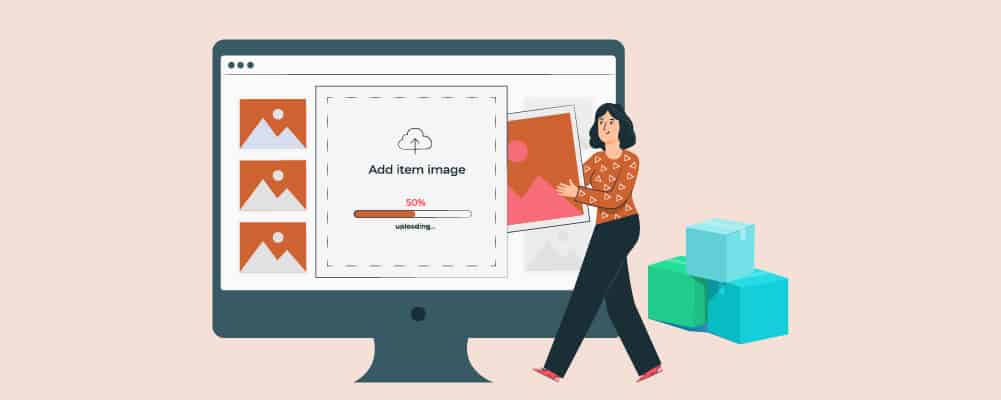
Now that you have your product and a business plan, you can list your first item. You can do this by using an existing similar product as a template or creating your own new listing.
You are able to upload lists in large batches or as singles, depending on your plan.
You want your product listing to be as optimized as possible. This includes keywords and a strategic layout.
When ordering your products to sell, make sure you order a small batch first so you can ensure that they will all be sold.
Below we have laid out some tips and tricks on how to best optimize your Amazon listings.
Targeted Product Title
One of the first things that a potential customer will see is the product title. This is why it is important that it is concise and features relevant keywords.
Ideally, you want to keep your title short and don’t go above 200 characters. This is how you make your title eye-catching.
Some basic rules to follow when writing your title is to capitalize the first letter of each word, use numerals instead of spelling them out (2 instead of two), spell out measurements fully, and don’t use abbreviations.
In your title, you want to avoid putting the price, quantity, and size of your product unless it is relevant. You should also avoid symbols and special characters.
Also, don’t use any suggestive language like ‘best’.
Concise Bullet Points
The bullet points are where you show off extra product information and its key features. You want to keep them short and descriptive.
Ideally, you want about 5 bullet points, as that is what 80% of third-party sellers use, and 58% of first-party sellers use in order to optimize their listing.
Try to be specific in your bullet points and only write about features that are pivotal to the product.
Similar to the title, avoid using numerals and abbreviated measurements. You should also include nothing about the price or shipping information.
Since they are bullet points, you don’t need to include any ending punctuation.
Concise Product Descriptions
This is where you can highlight the major product features including its size, style, use, and care instructions, The product descriptions should only be a few paragraphs long.
Make sure the description is written with proper grammar and punctuation and complies with any rules that the product category may have. Try to avoid using any promotional language.
You are not allowed to include your company name, website, or email in the product description or write about any other products you sell.
Product Variations
You are able to put variations of a product on the same list, for example, if they have different colors, sizes, scents, or flavors.
Only do this if it is relevant to have them listed as variants, if not then put them up as a different item.
With product variations, all the reviews of them are compiled under 1 product. So, if you have 2 reviews on the green version and 3 reviews on the blue version, then the product has 5 reviews.
Clear HQ Images
The product image is ultimately what draws the customer to your product. This means it needs to accurately represent your product and is easy to understand and see.
The main image needs to have a pure white background, fill 80% of the frame, and be at least 1000 pixels in height and length so people can zoom in without the image quality deteriorates.
You should aim for about 5 images to show off different angles of your product and possible uses. You can even include a video.
Top Tips For Successful Amazon Stores

The best tips will come from people who also sell on Amazon. You are able to join Amazon sellers’ groups on Facebook for inspiration and advice.
Run Sponsored Product Ads
A large part of growing a brand is to advertise it. This is necessary for any business in order to get more customers.
You can utilize Amazon ads or Amazon DSP (Demand Side Platform). Amazon DSP allows your products to reach audiences on sites owned by Amazon like Twitch, IMDb, and Whole Foods Market.
These ads can be in the form of a picture, audio, or video.
When advertising on Amazon, you can choose to advertise your products, brand, or an entire Amazon storefront. These ads are automatically targeted toward people who might be interested in your product.
Manage Your Inventory Closely
With your Amazon Seller account, you get Amazon Seller Central which acts as a dashboard for all your product listings. Here you can assign SKUs to products, manage inventory, and see which products are selling well and when.
This app is better than an external spreadsheet as it automatically updates. If you are using multichannel selling then you may need to use external inventory management.
This dashboard is available as an app so you are able to constantly check your inventory so that you never run out of stock.
Drive External Traffic
The best way to drive external traffic is to utilize keywords, this makes it easier for people to search for your product.
With omnichannel selling, you are able to sell your products across multiple sites as well as Amazon. This gives people who enjoy buying on Amazon the option to do so, and if they don’t they can buy it on a different site.
You are also able to utilize affiliate marketing. This is where if someone buys your product from a specific link, then the person assigned to that link gets a percentage of the sale.
These links are usually given out to bigger companies or influencers.
Get Your Pricing Right
Your price is what could stand between customers choosing yours or a competitor’s product. You want your price to be as low as possible while still turning a profit. You need to be reasonable with how much your product costs.
It also needs to be a trustworthy amount. Too little and customers would think there is something wrong with your product, too much and people won’t want to buy it as they can get it cheaper elsewhere.
Take Advantage Of Promotions
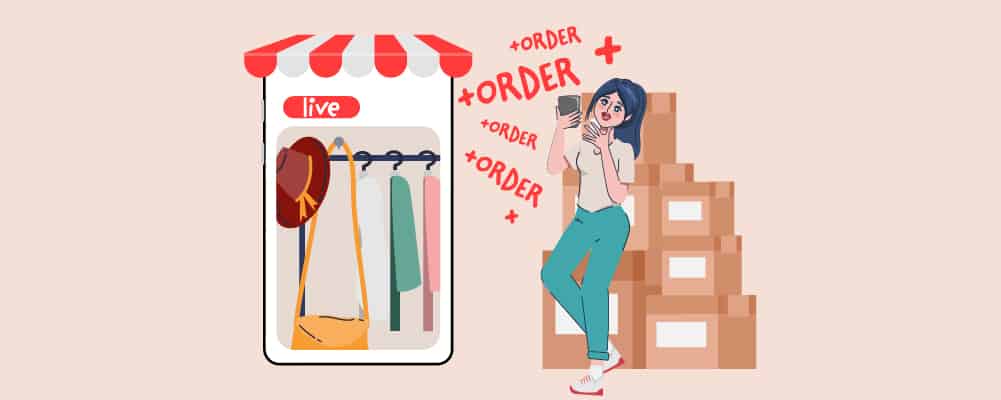
Promotions aren’t just a great way to sell your product but also to get your brand out there. The more items you sell, the more reviews you will get, which can help your brand ranking.
When you as a seller get 3.5 stars or higher rating, you can take advantage of Amazon coupons which can also help you sell more products.
Once you are a trusted seller, your items can be put in lightning deals, Prime deals, Cyber Monday deals, or Prime Day deals. Amazon will usually take care of the difference on these deals, so you don’t lose out on any profit.
While increased sales increase your seller rankings, promotions should only be done occasionally and at appropriate times like the holidays.
Encourage Product Reviews
Having a lot of positive reviews can help to push your product onto a higher page. It is a common misconception that people are likelier to leave a negative review.
In fact, 67% of people will consider leaving a positive review of a good experience. Whereas only 40% will leave a review if they had a negative experience.
One way to request feedback is by sending emails. The typical etiquette is to only send around 2-3 emails about a product, one to confirm the order, one to state it is out for delivery, and one asking for a review.
If you are sending emails, you are not allowed to send ones with marketing or promotional messages, have links to other sites, or demand/ask/incentivize positive reviews.
Negative reviews are also not a bad thing, they allow you to get feedback on your product and figure out where it needs improvement. Reviews are also a great place to be able to answer any frequent questions about your product.
Summary
The best time to start selling on Amazon was yesterday, the second best time is today. The longer you wait, the more competition will arise.
If you are passionate about selling online, then Amazon is the way to go. You get to join a community of other sellers and grow your brand.
Of course, you shouldn’t go into Amazon selling with the sole focus on building your brand. Instead, focus on selling your products and becoming a trusted seller.
This may involve selling boring items at first in order to build revenue for you to start your own brand later down the line.
Becoming an Amazon seller requires dedication and patience. It won’t be an immediate success, and you have to tough it out until you turn a profit.
The quickest way to turn a profit is to absorb as much data as you can. Look up sale statistics and product trends, and be prepared to shift your business plan to fit in with any immediate changes in the market.
The more you learn about selling online, the better you will be at it.
Once you have expanded your business, you are able to get software that will help you automate the process. It can automatically update your prices in order to beat the competition or take a product off if it is out of stock.
Not only do you want to maintain your selling business, but you also want to optimize it to the best of your ability so that you can have it functional with minimal issues.
Selling on Amazon is the easiest way to get your products to an already established audience that is willing to spend money on a variety of products.

